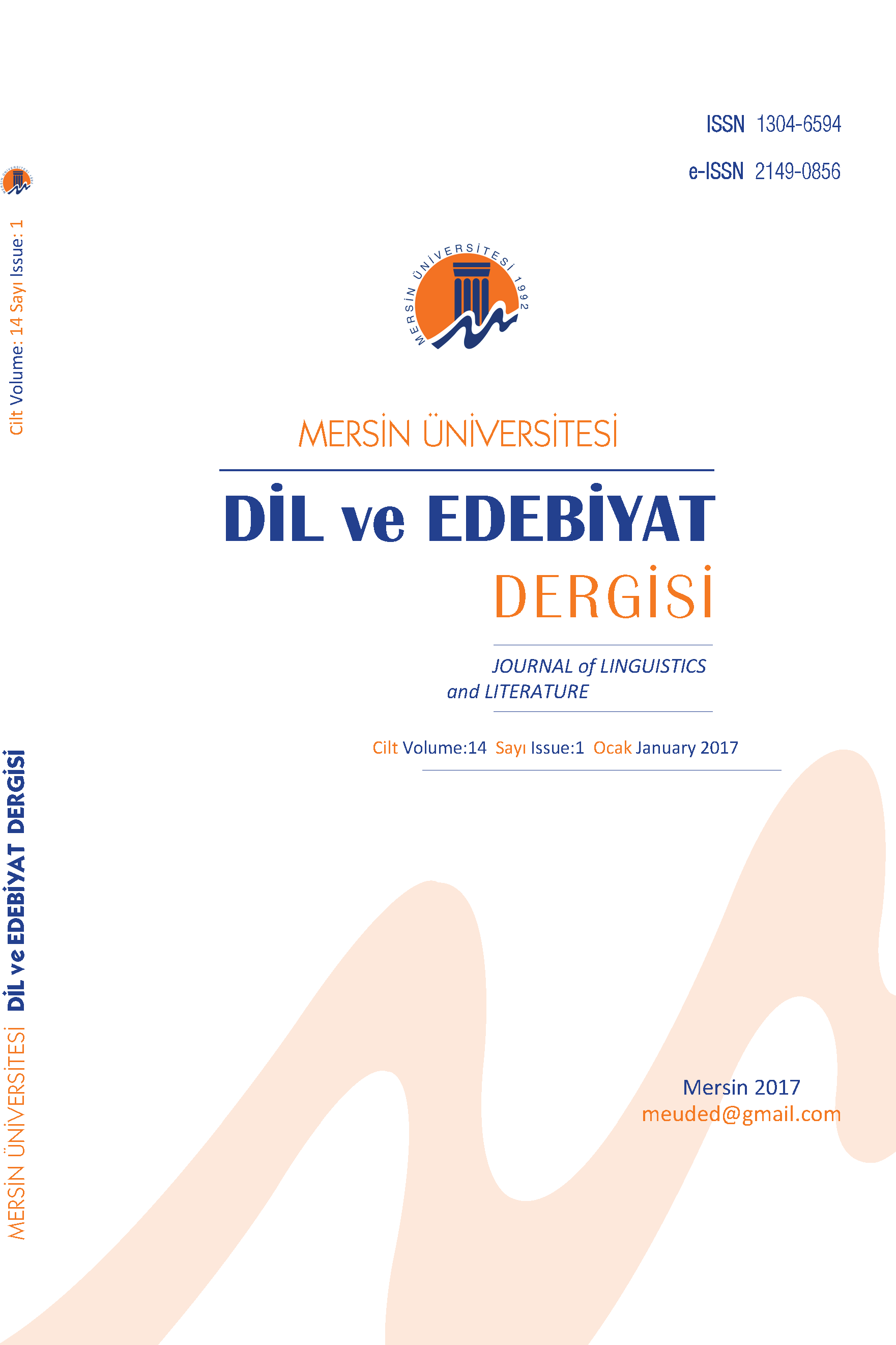Reference to Self in Turkish: Implications for Cognitive and Cultural Linguistics
Languages studied to date show evidence of conceptual metaphors, lexemes, and semi-formulaic structures for narrativizing self-reference in discourse. Self-reference has been found to distinguish between the self as subject ‘I’ and the self as ‘object’ of the discourse in the embodiment paradigm in cognitive linguistics, such that a split-self cultural schema has been proposed for several languages (see Lakoff, 1997; Kövecses, 2005; Pan, 2005). In this paper, we carry out a study on expressions that are related to this category of self-reference (e.g., içimden bir ses diyor ki) to unravel the conceptual metonymic and metaphorical schemas of self-reference in Turkish discourse. The purpose of the study is to test whether the split-self schema is applicable to the narrativization of self in Turkish. The findings reveal that distancing between self-aspects is a less prominent schema in Turkish discourse. This finding is interpreted within the conceptual metonymy of gönül in standard Turkish. The paper concludes with suggestions for further research in cognitive and cultural linguistics concerning the conceptualization of self in Turkish. Keywords: Subject and Self, The Split-self Schema, (partitive) Self-reference, Metadiscursive Frames, Cognitive Metonymy, gönül.
Anahtar Kelimeler:
Özne ve Benlik, Bölünmüş Benlik Şeması, (parçacıl) Kendine Gönderim, Üstsöylemsel Çerçeveler, Bilişsel Ad Aktarımı, gönül.
-
Languages studied to date show evidence of conceptual metaphors, lexemes, and semi-formulaic structures for narrativizing self-reference in discourse. Self-reference has been found to distinguish between the self as subject ‘I’ and the self as ‘object’ of the discourse in the embodiment paradigm in cognitive linguistics, such that a split-self cultural schema has been proposed for several languages (see Lakoff, 1997; Kövecses, 2005; Pan, 2005). In this paper, we carry out a study on expressions that are related to this category of self-reference (e.g., içimden bir ses diyor ki) to unravel the conceptual metonymic and metaphorical schemas of self-reference in Turkish discourse. The purpose of the study is to test whether the split-self schema is applicable to the narrativization of self in Turkish. The findings reveal that distancing between self-aspects is a less prominent schema in Turkish discourse. This finding is interpreted within the conceptual metonymy of gönül in standard Turkish. The paper concludes with suggestions for further research in cognitive and cultural linguistics concerning the conceptualization of self in Turkish.
Keywords:
Subject and Self, The Split-self Schema, (partitive) Self-reference, Metadiscursive Frames, Cognitive Metonymy, gönül.,
___
- Goffman, E. 1974. Frame analysis: An essay on the organization of experience. New York: Harper Colophon Books.
- Hofstede, G. 2001. Culture’s consequences: Comparing values, behaviours, institutions and organisations across nations. London: Sage Publications.
- Kövecses, Z. 2005. Metaphor and culture: Universality and variation. Cambridge: Cambridge University Press.
- Lakoff, G. 1997. The internal structure of the self. In: Neisser, Ulric & Jopling, David A. (eds.) 1997. The conceptual self in context: Culture, experience, self-understanding. Cambridge: Cambridge University Press, pp. 92-113.
- Lakoff, G. and Johnson, M. 1999. Philosophy in the flesh: The embodied mind and its challenge to Western thought. New York: Basic Books.
- Lebra, T. S. 2004. The Japanese self in cultural logic. Honolulu: University of Hawai’i Press.
- Mead, G. H. 1934. Mind, self, and society. Chicago: The University of Chicago Press. Morillas, J. M. M. 1999. The concept of self: Some cognitive-cultural considerations concerning its categorization and expression in Spanish and English. Language Design 2, 1-21.
- Ochs, E. and Capps, L. 1996. Narrating the self. Annual Review of Anthropology 25, 19–
- Pang, K. S. 2005. “This is the linguist in me speaking”, constructions to talk about the self talking. Functions of Language, 12 (1), 1-38.
- Ruhi, Ş. 2005. Türkçede inceliğin kavramlaştırılması: yüz ve gönül ile ilgili sözcük ve deyimler üzerine bir inceleme. Paper presented at the 14 th National Linguistics Conference, May 20-21, 2005, Harran Üniversitesi.
- Ruhi, Ş. 2006. Kültür araştırmalarında dilbilimin yeri: Kültürel anahtar sözcük bakış açısı. In A. Kocaman (ed.), Dilbilim: Temel kavramlar, sorunlar, tartışmalar. Ankara: Dil Derneği, pp. 89-100.
- Ruhi, Ş. and Işık-Güler, H. 2007. Conceptualizing face and relational work in (im)politeness: revelations from politeness lexemes and idioms in Turkish. Journal of Pragmatics 39, 681–711.
- Say, B., Zeyrek, D., Oflazer, K., Özge, U. 2002. Development of a corpus and a treebank for present-day written Turkish. In K. İmer & G. Doğan (eds.), Current research in Turkish linguistics: Proceedings of the 11 th International Conference of Turkish Linguistics. Magusa: Eastern Mediterranean University, pp. 183-192. (METU Turkish Corpus)
- Schiffrin, D. 2006. In other words: Variation in reference and narrative. Cambridge: Cambridge University Press.
- ISSN: 1304-6594
- Yayın Aralığı: Yılda 2 Sayı
- Başlangıç: 2004
- Yayıncı: Mersin Üniversitesi
